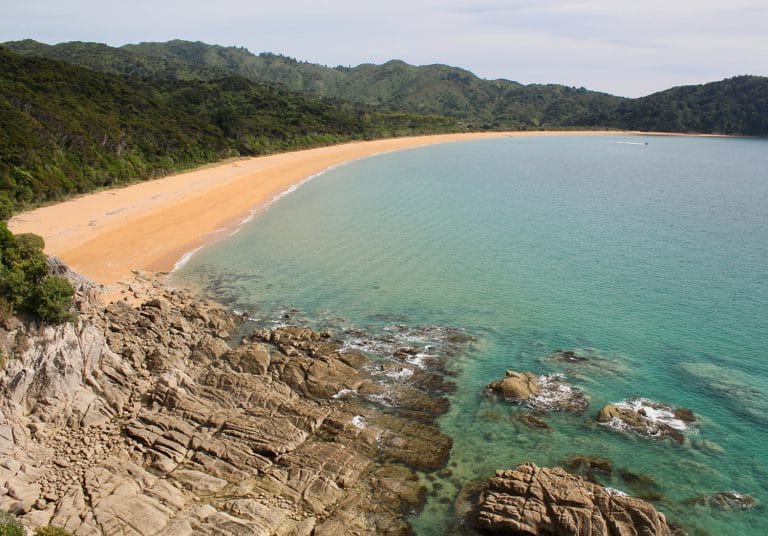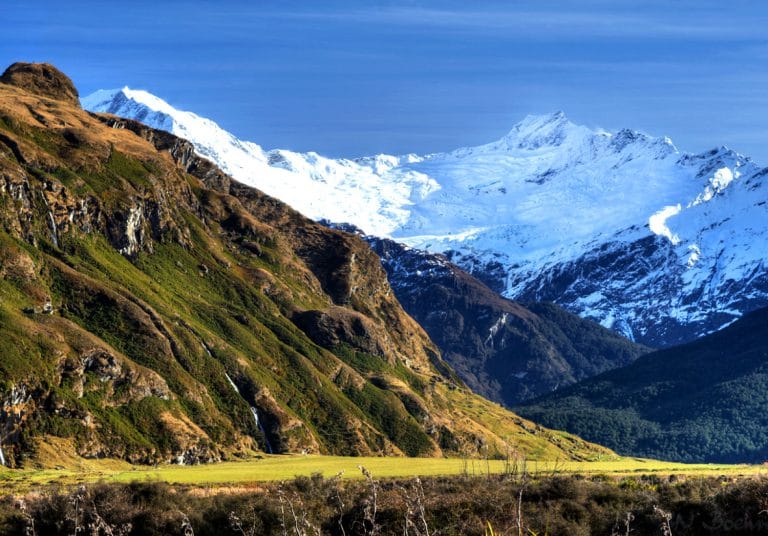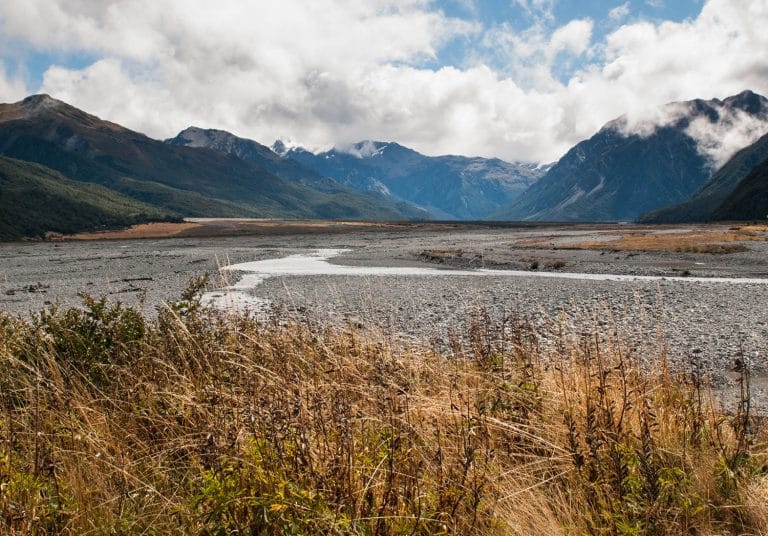Abel Tasman National Park contains rock pools, estuaries, outcrops, offshore islands, and golden sand beaches that rival the tropics. It is a national park defined by its coast. Abel Tasman National Park was established in 1942…
Aoraki
To Ngai Tahu, Aoraki represents the most sacred of ancestors, from whom the tribe is descended from and who provide the iwi with its identity and meaning. The ancestor embodied in the mountain is the physical manifestation of Aoraki, the link between the supernatural and the natural world.
Carving of Aoraki and his brother mountains, Aoraki Mount Cook Visitor Centre - © Cliff Whiting




